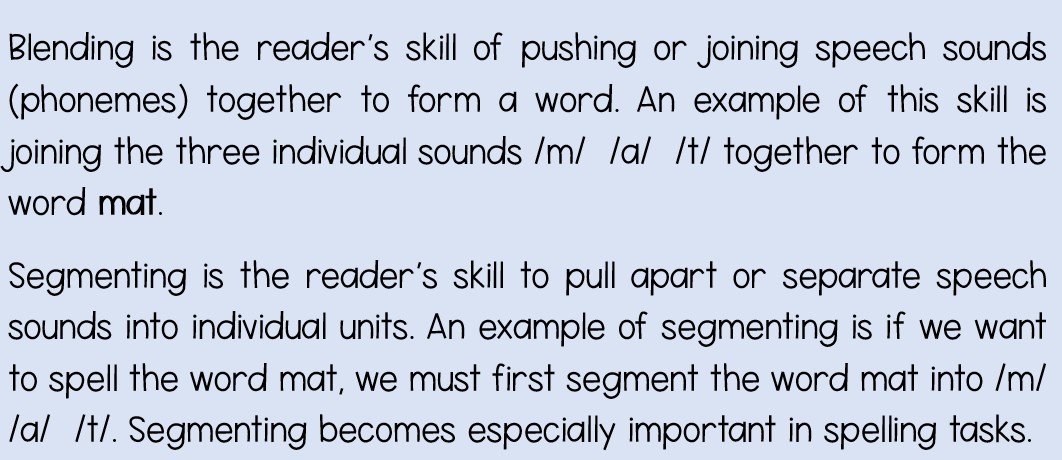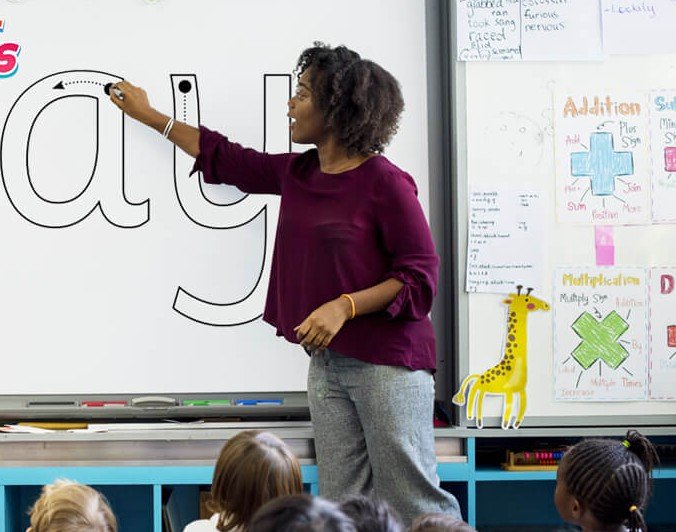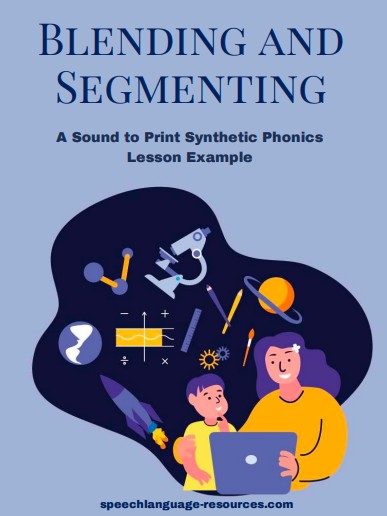Phoneme Fusion with Blending and Segmenting

Phoneme Fusion with Blending and Segmenting
Join me as we explore the critically important skills of segmenting and blending phonemes in early reading instruction.
The principle of teaching the foundational skills, blending and segmenting, is a core teaching tenet of sound to print synthetic phonics.
It's not too dramatic to state that blending and segmenting are keys that unlock the alphabetic codes and grants early readers the skills necessary to make reading mastery attainable..
Phoneme Fusion with Blending and Segmenting Defined

As teachers, speech-language pathologists, and school psychologists, our ambition is to support and scaffold complex learning material to assist students to access the curriculum, be it helping to either unlock the alphabetic codes or learn the nuances of oral language.
Segmenting and blending are central pillars of synthetic phonics teaching. These are scaffolding tools of the highest value. With the right level of instruction these skills have the potential to shape novice learners into accomplished readers and writers.
Think of blending and segmenting as two halves of the same coin, working in harmony to develop nascent reading skills. In this way blending and segmenting are akin to cognitive gears that help drive the decoding and encoding mechanisms in the human brain.
Phoneme Fusion with Blending and Segmenting and Automaticity
Blending, is the process of linking individual sounds together into words. With the proper teaching and sufficient practice, students can be expected to develop blending skills to the level of automaticity.
Automatic skills in blending develops over time but does need to be explicitly taught to students early and with sufficient intensity. But the effort to teach these skills early has a compound effect - competent skills in blending has the added benefit of greatly reducing students' cognitive load when decoding new and unfamiliar words.
Segmenting is the art of breaking words down into their most basic sounds, or phonemes, and is a skill which provides a clear structure for spelling and writing words.
A key strength of developing segmenting skills early lies in its effectiveness in creating a robust sound-to-letter link, an important skill, particularly when attempting to spell an unfamiliar word.

Phoneme Fusion with Blending and Segmenting and Beginning Readers
Beginning readers, or those with undeveloped phonemic awareness skills, can quickly find themselves in a muddle and lost in a maze of newly learnt letters and sounds. In this situation cognitive load can become an issue, impacting students' ability to learn the alphabetic codes.
This is where blending and segmenting can serve as a sort of guiding light, so it's important to teach these skills from the very beginning and weave them into every literacy lesson in the first year of school for all students.
The teaching of blending and segmenting skills should be given strategic importance by educators who work in the early years.
This is because blending and segmenting is a winning combination when taught with fidelity. And strategic teaching of blending and segmenting of words within a sound to print phonics lesson is a central component of the bottom-up learning process.

By fostering confidence in our students with blending and segmenting skills, we essentially advance our students from an undeveloped pattern recognition (letters are mostly abstract shapes to new readers) towards automatic recognition of graphemes and spellings.
To quickly recognise learnt words automatically is a critically important skills that young readers need to ensure reading fluency. Automatic word recognition eases the burden on working memory reserves when a child reads connected text.
It achieves this by freeing up a child's cognitive resources. This release from the shackles of cognitive load provides a foundation and blueprint on which successful, reading fluency and reading comprehension can be constructed upon.
Click on Image to Download free ebook - A Blending and Segmenting Phonics Lesson
Phoneme Fusion with Blending and Segmenting and Reading Science
Research in reading science has provided us with evidence that blending and segmenting has a powerful impact on the development of students' reading mastery.
Once students have developed blending, segmenting and phoneme manipulations skills they are on the path to reading mastery. and automaticity.
These skills are important to develop to a high level of competency, particularly when students make the leap from basic code knowledge to learning the advanced alphabetic codes with all their complexities.
Literacy learning is a journey that begins with students taught to decode simple CVC words but evolves quite rapidly being able to comprehend newly learnt words in connected print - and knowing them..
Phoneme Fusion with Blending and Segmenting - Woven into the Fabric
It's crucial that blending, segmenting and phoneme manipulation skills be taught to mastery. The best way to teach this is to make each lesson has blending and segmenting weaved into the fabric of each lesson.
As educators, we need to ensure that the teaching of segmenting and blending exists within a framework where utilization of these skills is designed to build, create and manipulate the spellings within words from the beginning.
Once these skills are at a stage of some competence, then students will be better placed to later practise blending, segmenting and phonemes manipulation when reading and writing connected text.
It is also something that can be developed with daily dictation activities. In dictation students can demonstrate their ability to write newly learnt words in connected text dictated by the teacher in real time and gain immediate teacher feedback.

Phoneme Fusion with Blending and Segmenting - Summary
In summary, segmenting and blending are phonemic awareness skills that enable students to quickly and efficiently make real and lasting connections between speech sounds and the alphabetic codes which represent those sounds
One of the enduring benefits in teaching these skills is that highly competent blending and segmenting skills act as a safe guard to ensure students' develop confidence and automaticity when decoding new and unfamiliar words.
Perhaps the greatest value in choosing a sound to print method of teaching literacy, is that blending, segmenting and phoneme manipulation are taught from the very beginning of day one, lesson one in basic code. These skills develop all the way through several years of learning to competently decode complex and advanced alphabetic codes.
An added benefit of being competent with blending, segmenting and phoneme manipulation skills is that a high degree of mastery and automaticity in these skills leads to fluent reading, and quickly.
Fluent reading leads to greater comprehension of text which can only free up students' cognitive resources, which places our students in the fast lane in their efforts to understand increasingly complex text as they progress as learners.
References:
Dehaene, S. (2009) Reading in the Brain: The New Science of How We Read. Penguin
McGuiness, D. (1997) Why Children Can't Read: And what We Can Do About It, Penguin Books
McGuiness, D. (2004) Early Reading Instruction: What Science Really Tells Us about How to Teach Reading, A Bradford Book
Updated: 02/2024

